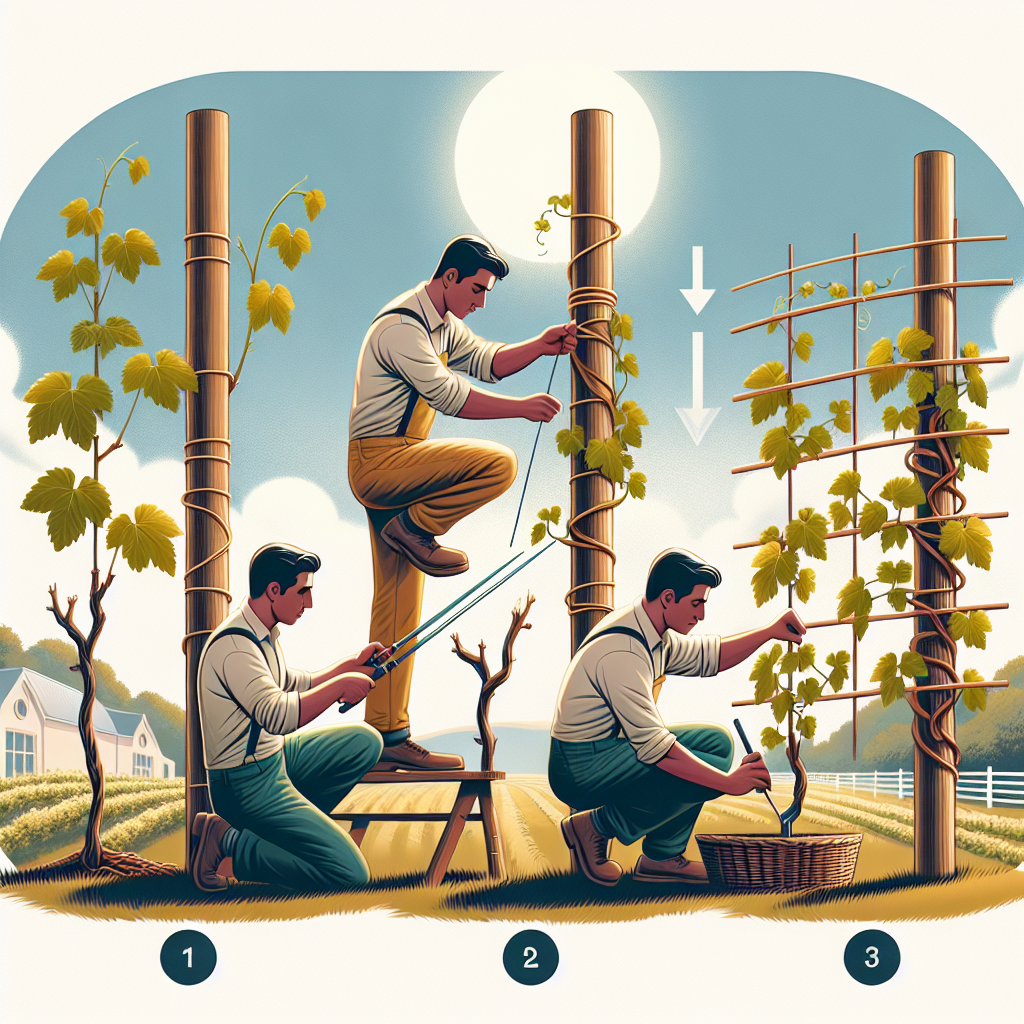
How to support grape vines
How to Support Grape Vines: A Comprehensive Guide
Grape vines are not just a beautiful addition to your garden; they are also a source of delicious fruit and can create a stunning landscape when properly supported and trained. Understanding how to support grape vines is essential for obtaining healthy, fruitful plants that thrive. In this guide, we will explore the various methods of supporting grape vines, the tools you need, the best practices for growth, and common mistakes to avoid.
Understanding Grape Vines
Before diving into support methods, it's important to understand the growth habit of grape vines. They are climbing plants that need some form of assistance to reach their full potential. Grape vines can grow in various environments, but they thrive in well-drained soil and require plenty of sunlight. Their tendrils are designed to grab onto supports, which help them grow upward toward the light.
The Importance of Supporting Grape Vines
Proper support structures not only encourage healthy growth but also protect the vines from diseases and pests. When grape vines are left unsupported:
- They can become tangled, leading to poor air circulation.
- Fruits may touch the ground, making them vulnerable to rot and pest infestations.
- The overall health of the vine can diminish.
Thus, providing adequate support will enhance your vine’s productivity and longevity.
Choosing the Right Support System
When considering how to support grape vines, you have several options. Your choice of support depends on factors like the grape variety, growth habits, and available space. Here are some popular support methods:
Trellis Systems
Trellising is one of the most effective methods for supporting grape vines. It involves a framework of vertical posts and horizontal wires that allow the vines to climb. Here’s how to create a simple trellis:
- Select a location that receives full sun.
- Choose sturdy materials such as wood, metal, or PVC piping.
- Install posts about 8 to 10 feet apart and at least 4-6 feet tall.
- Attach at least two horizontal wires between the posts, one at 3 feet and another at 5-6 feet high.
Trellising offers the following advantages:
- Everyone can easily reach the grapes for harvesting.
- Improved air circulation and sun exposure, promoting healthier fruit.
- Reduction of disease risk and pest infestations.
Arbors and Pergolas
If you're looking for an aesthetic element to your garden while supporting your grape vines, consider building an arbor or pergola. These structures not only provide support but also add beauty to your landscape.
"An arbor can be a focal point in your garden, providing shade while enhancing the visual symmetry." - Garden Design Expert
Post and Beam Method
This simple method is perfect for smaller spaces. It involves using vertical posts supported by horizontal beams, allowing vines to wrap around. This method is particularly great for backyard growers and can be made from various materials like wood or metal.
Cable and Wire Systems
For those who prefer a modern look, cable systems can be employed. This entails using high-tensile cables that run horizontally and vertically, creating a sleek support that blends into the background. The cables should be securely anchored to provide stability for the grape vines as they grow.
Tools and Materials You'll Need
Regardless of which support system you choose, having the right tools and materials is crucial. Here’s a checklist to guide you:
- Posts: Wood, metal, or durable PVC.
- Wire or cable: High-tensile or galvanized wire for trellis systems.
- Tools: Drill, saw, hammer, twine, and pruning shears.
- Fasteners: Screws, brackets, or clips to secure the support system.
Best Practices for Supporting Grape Vines
Timing Your Support Installation
The best time to install your support system is during the early spring, right before new growth begins. This allows the vines to wrap around the supports as they grow, significantly improving their chances of thriving.
How to Train Your Grapevines
Training is an essential aspect of supporting grape vines. Here’s a simple step-by-step guide:
- As new shoots begin to grow, select the strongest ones and tie them to the support structure with soft twine.
- Remove any weak or poorly positioned shoots to ensure the plant focuses its energy on healthy growth.
- Continue to tie the growing shoots periodically to encourage upward growth.
- Once your plants reach the top of the support system, you can prune them to encourage lateral growth, which yields more fruit.
Watering and Nutrient Management
Proper hydration and nutrients are essential for supporting healthy grape vines. Ensure that your vines receive adequate water, especially during dry spells. Here are some tips:
- Irrigate deeply and infrequently to encourage deep root growth.
- Utilize mulch to retain moisture and suppress weeds.
- Fertilize once in early spring and again mid-summer, using a balanced fertilizer.
Common Mistakes to Avoid
Maintaining grape vine support is a process, and avoiding common pitfalls can help you produce better results. Here’s what to look out for:
- Neglecting to prune: Regular pruning prevents overcrowding and encourages healthy fruit production.
- Overwatering or underwatering: Balance is key; too much or too little water can stress the vines.
- Ignoring pest and disease management: Regular inspections for pests and diseases can save your grapes from significant damage.
Conclusion
In summary, learning how to support grape vines goes beyond just creating a structure. It involves understanding the needs of your grape plants, selecting the right support systems, and nurturing them for maximum productivity. Start with a solid support structure and train your vines with care, and you’ll enjoy luscious grapes for years to come. Happy gardening!
```By Guest, Published on August 19th, 2024